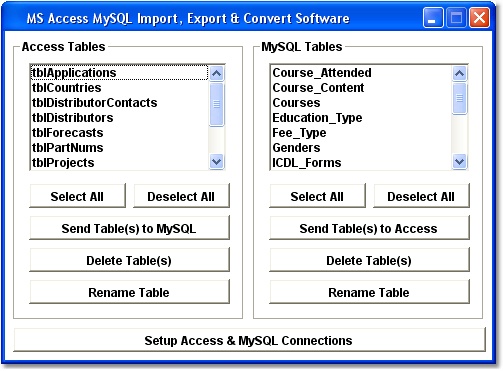

If you want to do this from the command line, it is important to use the following parameters: Usually, the number of records allocated in one data window equals to 2 * fetch size. Note: Try to play with Fetch size environment option to find the optimal performance.

After opening the table, click Export and make regular export steps. If you want to do this from GUI, open your source database using FD engine, then right-click the needed table and choose Open in Live Data Window Mode. This way works for databases, opened by FD engine it does not work for SQL queries. After this part has been exported, the memory is freed, and next part of records is fetched/loaded. In this mode, only small part of source records are kept in memory. The source table must be opened in so called Live Data Window mode. It is very easy to do, but can slow down the exporting process. Using Live Data WindowĪvailable in Exportizer Enterprise. To solve the problem with source part, we could try two solutions in Exportizer. If you turn off the Memory saving mode option, the exported records are allocated in the operating memory too! But this problem is easy solvable: just turn the mentioned option on. And if you don't have enough RAM to allocate all source records, you run into out of memory error, the the application crashes and you can loose some part of already exported data.Īnother problem can be with the target part of your export process.

For some database types or used database engines, it is done immediately after opening the table for others, the records are fetched from the server and kept in the local computer memory during the exporting. Exporting a very large table or query result from a database to another database may require non-standard approaches.īy default, all databases records from the source table are allocated in the operating memory.


 0 kommentar(er)
0 kommentar(er)
